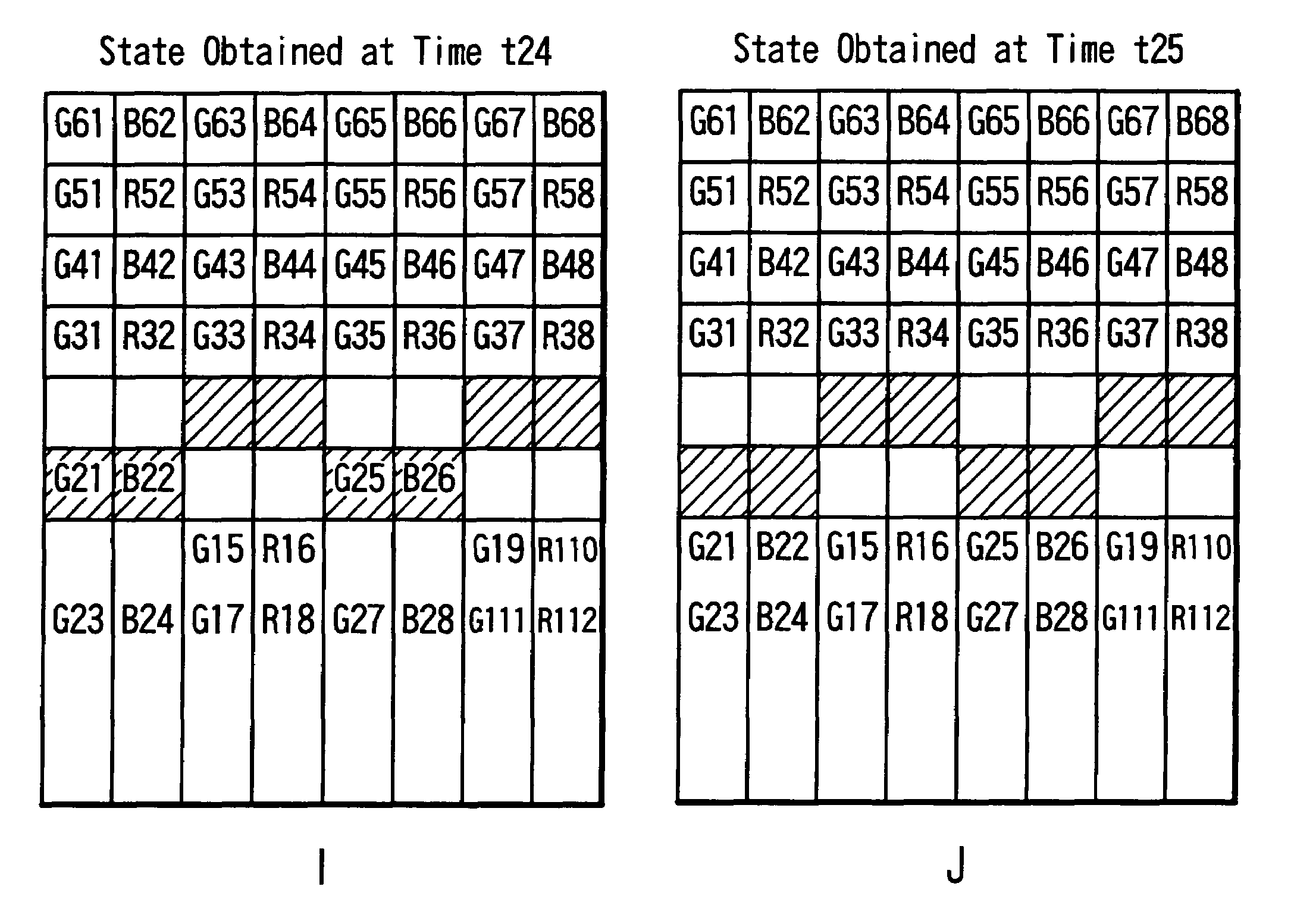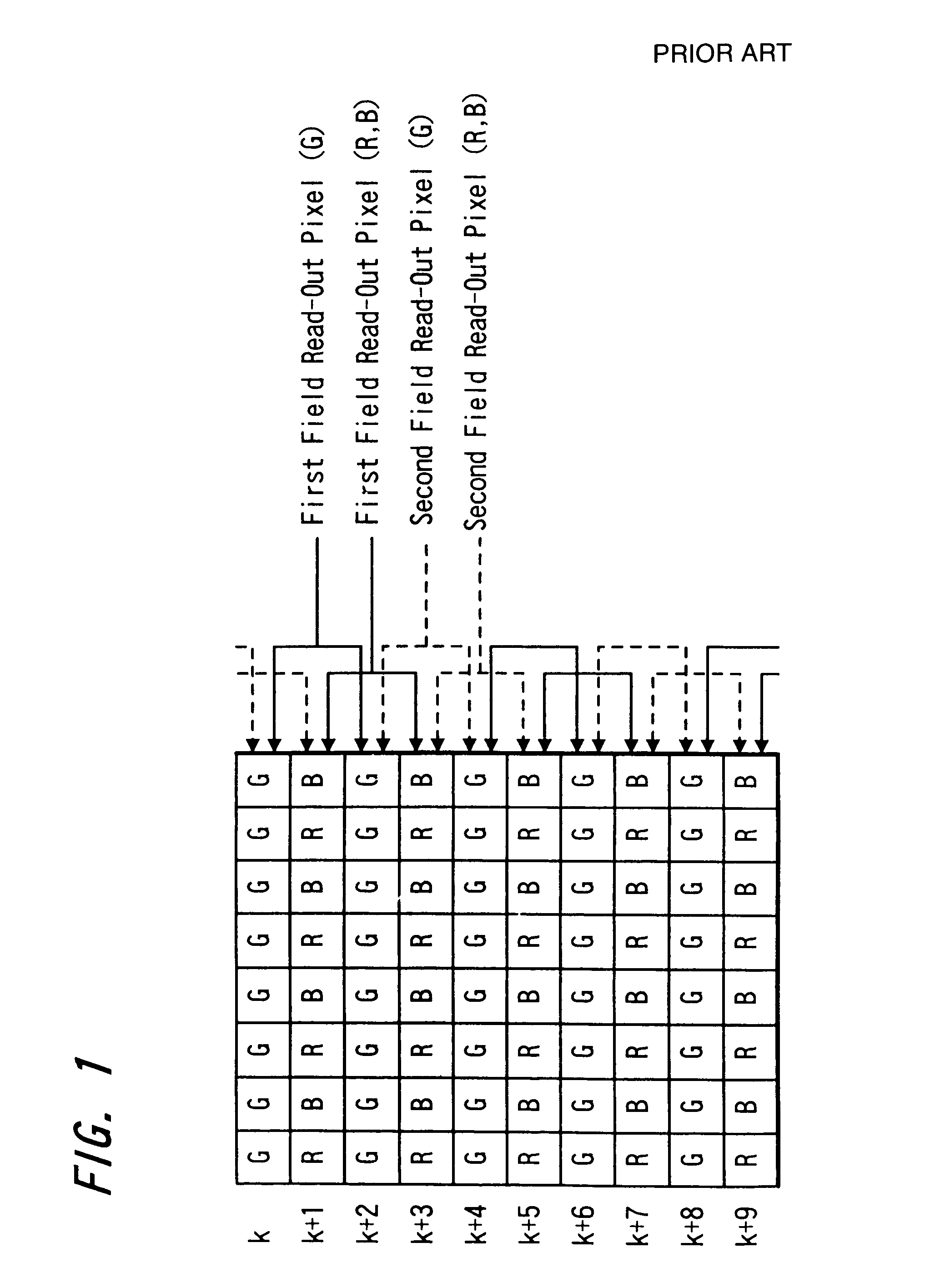Method of driving solid-state imaging device, solid-state imaging device and camera
a solid-state imaging and imaging device technology, applied in the direction of picture signal generators, television system scanning details, television systems, etc., can solve the problems of deteriorating balance between horizontal and vertical resolutions, useless signals of remaining 250 lines, and further worsening balan
- Summary
- Abstract
- Description
- Claims
- Application Information
AI Technical Summary
Benefits of technology
Problems solved by technology
Method used
Image
Examples
Embodiment Construction
[0059]According to the present invention, in a solid-state imaging device of a two-dimensional array having a pixel comprising a light-receiving accumulation unit and a vertical register (interline transfer type or frame interline transfer type) or a vertical register (frame transfer type) having a light-receiving function and a horizontal register, there is provided a solid-state imaging device driving method which is comprised of the steps of transferring signal charges of pixels distant from each other on the same row to the horizontal register, and mixing the signal charges within the horizontal register and transferring the mixed signal charge in the horizontal direction.
[0060]Also, according to the present invention, in the above-mentioned solid-state imaging device driving method, after the signal charges of pixels distant from each other on the same row are separately transferred from the vertical register to the horizontal register and one signal charge is transferred to th...
PUM
 Login to View More
Login to View More Abstract
Description
Claims
Application Information
 Login to View More
Login to View More - R&D
- Intellectual Property
- Life Sciences
- Materials
- Tech Scout
- Unparalleled Data Quality
- Higher Quality Content
- 60% Fewer Hallucinations
Browse by: Latest US Patents, China's latest patents, Technical Efficacy Thesaurus, Application Domain, Technology Topic, Popular Technical Reports.
© 2025 PatSnap. All rights reserved.Legal|Privacy policy|Modern Slavery Act Transparency Statement|Sitemap|About US| Contact US: help@patsnap.com



